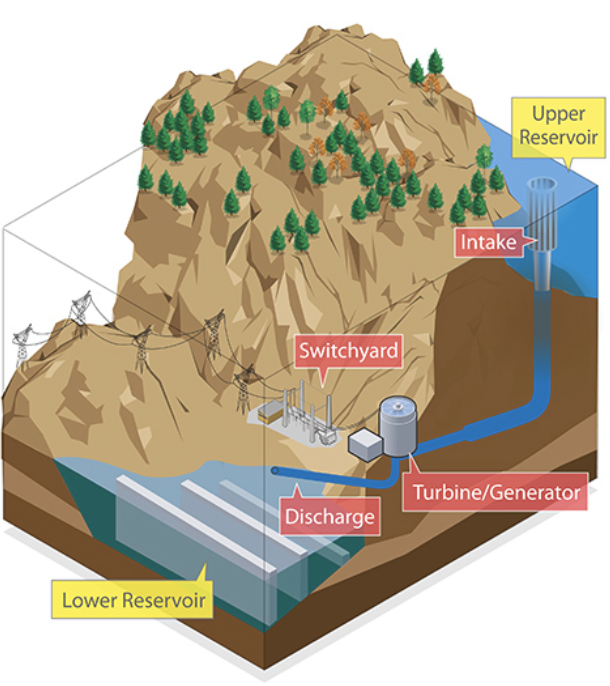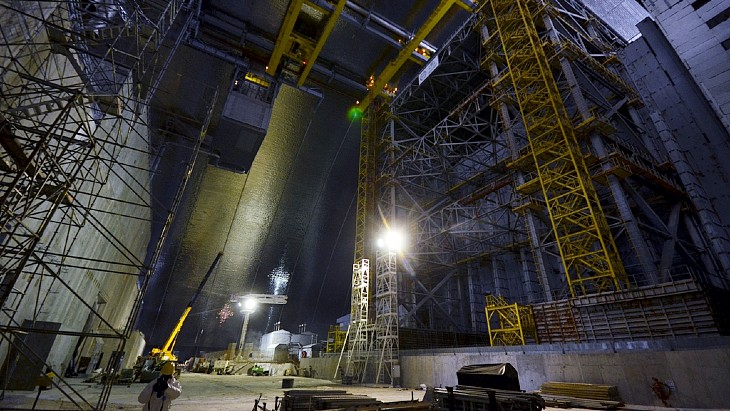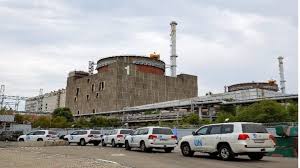
In analysis conducted at the US Department of Energy's National Renewable Energy Laboratory (NREL), closed-loop pumped storage hydropower systems have emerged as the leading environmentally friendly solution for grid-scale energy storage. These findings, published in the journal Environmental Science and Technology, shed light on the critical role of closed-loop pumped storage hydropower in mitigating global warming potential compared to other energy storage technologies.
Closed-loop pumped storage hydropower systems, which operate independently of external bodies of water, were found to have the lowest potential contribution to global warming when considering the full lifecycle impacts, including materials and construction. These systems function by circulating water between two reservoirs to generate and store power, offering a sustainable approach to energy storage.
The study, titled "Life Cycle Assessment of Closed-Loop Pumped Storage Hydropower in the United States," was authored by a team of experts from NREL's Strategic Energy Analysis Center, including Daniel Inman, Gregory Avery, Rebecca Hanes, Dylan Hettinger, and Garvin Heath.
"Closed-loop pumped storage hydropower is shown to be the smallest emitter of greenhouse gases," stated Daniel Inman, one of the authors of the study.
The research aimed to assess the global warming potential (GWP) of various energy storage technologies, recognizing their pivotal role in overcoming the challenges associated with intermittent renewable energy sources like wind and solar. As renewables generate electricity intermittently, excess energy production can occur, leading to wastage. Energy storage systems bridge this gap, ensuring surplus renewable electricity reaches consumers.
The study compared pumped storage hydropower to four other technologies: compressed-air energy storage (CAES), utility-scale lithium-ion batteries (LIBs), utility-scale lead-acid (PbAc) batteries, and vanadium redox flow batteries (VRFBs). While CAES and pumped storage hydropower are designed for long-duration storage, batteries are intended for shorter-term use.
Inman highlighted: "Not all energy storage technologies provide the same services. We looked at compressed-air energy storage, which allows for grid-scale energy storage and provides services like grid inertia and resilience. But pumped storage hydropower is about a quarter of the greenhouse gas emissions compared to compressed air."
The researchers based their analysis on 39 preliminary designs from 35 proposed sites across the contiguous US. They assumed an average closed-loop pump storage hydropower facility would have a storage capacity of 835MW and deliver an estimated average of 2,060GWh of stored energy annually. Their base scenario considered an electricity mix sourced entirely from renewable technologies.
The study estimated that the GWP associated with 1 kWh of stored electricity delivered to the nearest grid substation connection point for pumped storage hydropower ranged from 58 to 502 grams of carbon dioxide per kWh. Hydropower stood out as the leader in terms of GWP on a functional unit basis, followed by LIBs, VRFBs, CAES, and PbAc. Additionally, the researchers discovered that certain decisions, such as building on a brownfield site rather than a greenfield site, could reduce the GWP by as much as 20%.
The research was funded by the US Department of Energy's Water Power Technologies Office.







